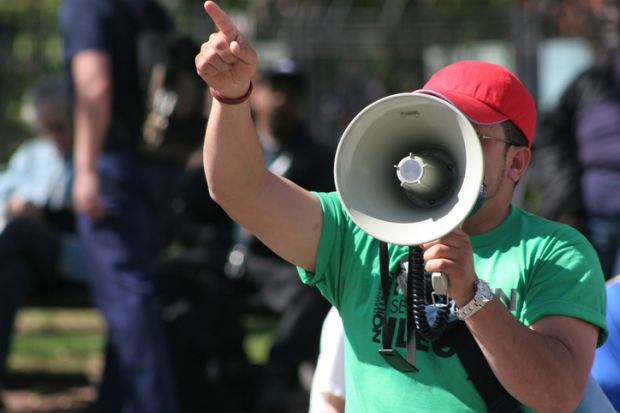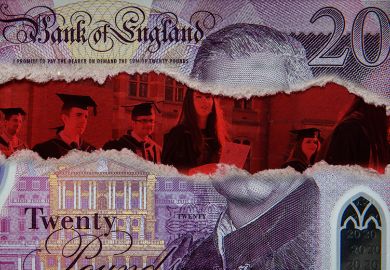More than two-thirds of US colleges and universities cut faculty pay last year, driving down their net wages for the first time since the Great Recession of 2007, their chief professional association reported.
The findings reflect decades of divestment and chronic underfunding of higher education at state and federal levels, compounded in 2020 by the pandemic-driven economic downturn, the American Association of University Professors (AAUP) said in issuing its annual survey data.
The result, the AAUP said, was “an existential threat to shared governance and academic freedom in higher education that severely weakens our nation’s ability to effectively educate our communities”.
The AAUP issued its findings at a moment of general optimism among US workers, with wages rising as many companies hustle to find employees to help them reopen. In addition, many states, bolstered by federal bailout aid and reviving industries, are reporting sudden and significant improvements in their budgetary health.
Such auspicious news, however, is not necessarily translating into gains in job security and salaries for faculty and other higher education staff, said the AAUP’s president, Irene Mulvey, a professor of mathematics at Fairfield University.
That is because many institutions have been in a long-term trend of cutting costs by offering lower pay and hiring part-time teaching staff, and it is far too early in the economic recovery to expect that administrators will adjust that approach, Professor Mulvey said.
“States being flush with money right now does not make me optimistic,” said Professor Mulvey, whose association has chapters at more than 500 accredited colleges and universities.
“The states have money now, so they may give it to you,” she said. “But then when they don’t have money, they’ll take it away.”
The most optimistic current developments, Professor Mulvey said, involved a number of proposals now circulating in Congress that would impose new job-related mandates on institutions in return for the billions of dollars in federal support they receive each year.
Those initiatives include language requiring institutions to keep minimum percentages of their faculty in tenured or tenure-track positions.
“Faculty are trying to hold them accountable, and that’s not working,” Professor Mulvey said of US colleges and universities. “But if they’re held accountable for money at the federal and state levels, that could really be a game-changer in terms of making it a profession that people want to join, a profession worth joining.”
This year’s AAUP report contains data from two separate surveys aimed at tallying faculty compensation and institutional responses to Covid, plus analyses of employment and finance data regarding contingent faculty, administrative growth and institutional debt.
They showed that nearly 68 per cent of US institutions cut wages for full-time faculty in the 2020-21 academic year in constant-dollar terms, while the number of full-time faculty shrank at more than 60 per cent of institutions.
More than a quarter of institutions reduced or eliminated fringe benefits, and nearly 20 per cent cut some of their full-time non-tenure-track faculty, the AAUP said.
POSTSCRIPT:
Print headline: ‘An existential threat’: US faculty pay drops for first time since Great Recession
Register to continue
Why register?
- Registration is free and only takes a moment
- Once registered, you can read 3 articles a month
- Sign up for our newsletter
Subscribe
Or subscribe for unlimited access to:
- Unlimited access to news, views, insights & reviews
- Digital editions
- Digital access to THE’s university and college rankings analysis
Already registered or a current subscriber?







